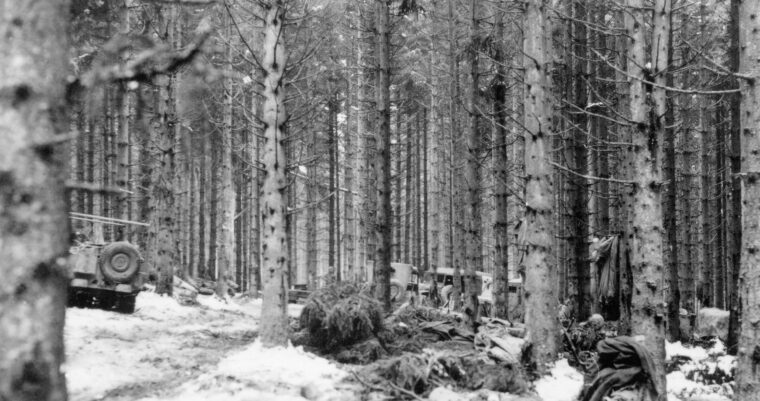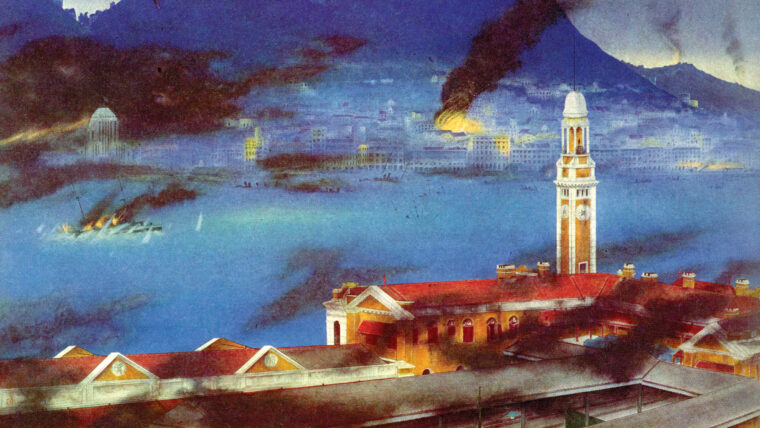
Rommel and Caporetto
By Lt. Col. Harold E. Raugh, Jr., Ph.D., U.S. Army (Ret.)Trench warfare on the Western Front during World War I was generally static, stultifying, and unimaginative. Read more

Trench warfare on the Western Front during World War I was generally static, stultifying, and unimaginative. Read more
Dear Editor:
What an absolute delight to read James K. Swisher’s article, “Duel in the Backwoods” (December 2002), about the Battle of Cowpens and General Daniel Morgan’s superb generalship and guiding hand during this battle. Read more

History is as solid as bricks. Things happened and they can’t be changed. But they can be seen with a fresh eye, or they can be noted for effects not apparent at the time. Read more

Denis de Morbecque, an exiled French knight in the service of the English crown, thought the fighting in the hawthorn hedgerows near Poitiers would never end. Read more

The metal detector buzzed loudly. Its operator, Jean-Louis Seel, used his foot to unearth a dog tag beneath the pine needles. Read more
Dear Sirs:
I have enjoyed your new magazine for its subject matter, layout, and graphics. Your challenge is to present articles on subject matter that has been covered for many years by world-class writers such as Cornelius Ryan, Carlo d’Este, and lately Adrian Lewis about D-day. Read more

The Pearl Harbor disaster presented the U.S. Navy with a sobering question: how to recover? More than 2,000 men had died. Read more

When Chancellor Adolf Hitler started rearming Germany in 1934, his submarine force commander, Admiral Karl Doenitz, asked for men and materiel to create a fleet of 300 U-boats. Read more
On the same day that the atomic bomb was dropped on Hiroshima, America’s ace of aces, Richard Ira Bong, was killed while test piloting the experimental Lockheed P-80 Shooting Star in Burbank, Calif. Read more

With rhythmic tread, the Canadian soldiers marched behind the bagpipers of the Royal Scots up Nathan Road. Read more

That would be absurd,” responded the legendary Royal Navy Admiral Sir (later Lord) Horatio Nelson to the patriotic lady asking to rename her pub the Nelson Arms, “seeing I have but one.” Read more
Dear Mr. Stoddard,
I have just finished reading Pedro Garcia’s “Highway to Victory” (October 2002). In it he states that “only three of these vessels [ironclads] ever became operational, none proving capable of going to sea.” Read more
Strange it is that American independence owes not only to a crushing American defeat but also to an infamous American traitor. Read more

A few days after German panzers rumbled through the chill, foggy Ardennes Forest early on December 16, 1944, breaching thinly held American lines and causing widespread confusion and near panic, a number of Allied units were rushed in to plug the gaps. Read more

From their hiding places in the valley below, the soldiers looked up at the wall of shale looming more than 3,000 feet above them. Read more
Dear Sir,
The article “Anything, Anywhere, Anytime” (July 2002) about the Air Transport Command (ATC), written by Sam McGowan, was excellent. Read more
A mere six months passed between the tragedy of Pearl Harbor and the triumph of U.S. naval forces during the Battle of Midway. Read more
Dear Sirs:
Regarding the article on the Doolittle Raiders attack on Japan entitled “Pearl Harbor Payback” (July 2002), there are several corrections that should be noted. Read more

Everywhere General George S. Patton, Jr., went, from North Africa to Sicily to continental Europe, his camera swayed from his neck, ready to capture images that interested him. Read more

The Papuan peninsula is a lush, tropical rainforest on the southeast end of New Guinea populated by Melanesian natives. Read more